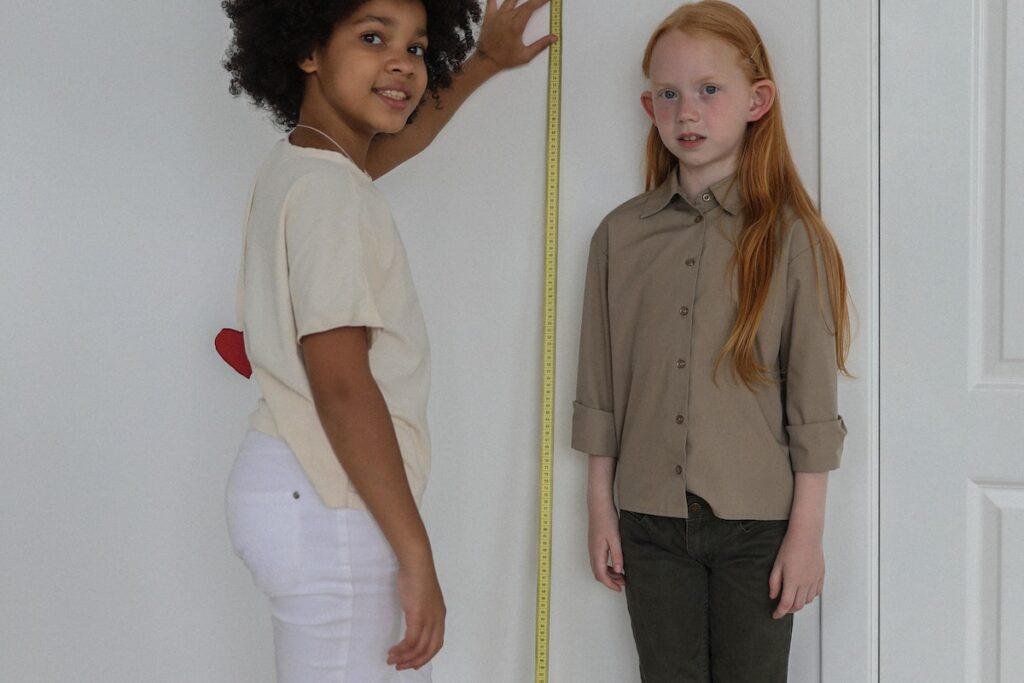Welcome to the exciting world of parenting, where every moment counts, especially when tracking your baby’s growth and development. One of the essential tools for monitoring your baby’s progress is the baby growth chart.
Baby growth charts track a baby’s height, weight, and head circumference over time, and they help healthcare providers assess whether a baby is growing and developing as expected. In this article, we’ll discuss everything you need to know about tracking your baby’s growth and development using baby growth charts.
Understanding Baby Growth Charts
Before we dive into tracking your baby’s growth and development, let’s first understand what baby growth charts are and how they work.
What are baby growth charts?
These are standard charts used to track babies’ physical growth and development and their physical growth and development over time. Different growth charts, including infant types of growth charts, infant growth charts, and pediatric growth charts, are used for different age ranges.
Pediatric growth charts monitor child growth standards. Healthcare professionals use them. The growth charts use data from a large sample of healthy children, creating a standard range of measurements expected for a child’s age and sex.
They help healthcare providers assess whether a baby is growing and developing as expected, and they can identify potential health concerns.
How do baby growth charts work?
Baby growth charts typically work by tracking three key measurements called growth percentiles plotted on a growth chart to compare with other babies of the same age and sex, and they include:
- height,
- weight, and
- head circumference.
The measurements are plotted on a graph over time, visually representing the baby’s growth pattern, referred to as data points.

The growth chart also includes percentiles, which compare the baby’s measurements to those of other babies of the same age and sex.
Healthcare providers use the growth chart to interpret the baby’s growth pattern and identify any potential issues, and here is how they do it;
The growth chart includes lines representing different percentiles, such as the 5th, 50th, and 95th percentiles.
The lines on the growth chart create curves representing the typical growth pattern for babies of that age and sex.
The position of the baby’s measurements on the growth chart, relative to the lines and curves, can indicate whether the baby is growing and developing as expected.
Tracking Your Baby’s Growth and Development Using Baby Growth Charts
Keeping track of your baby’s growth and development is essential. Keeping track of your baby’s growth and development is important, as this can help identify potential health issues early on.
Warning signs that your baby may not be developing include delayed development, such as:
- not sitting up or rolling over when expected,
- not making eye contact or smiling, or
- not responding to sounds or voices.
To support your baby’s development, you can engage in activities such as:
- tummy time,
- reading books, and
- playing with toys that encourage motor skills, social interaction, and language development.
It is also crucial to provide a healthy and nurturing environment for your baby, including a balanced diet and adequate sleep.
Taking your baby for regular checkups is vital for monitoring its growth and development. Research recommends that babies have frequent checkups during the first year of life, with visits at 2, 4, 6, 9, and 12 months. After the first year, well-child visits will be annual unless a specific health concern exists.

There are several growth charts and tracking tools available that parents can use to monitor their baby’s growth and development. These include:
- The World Health Organization (WHO) infant growth chart,
- Disease Control and Prevention Center (CDC) growth chart and;
- Electronic growth charts (available on various mobile applications.
Your local healthcare provider can help you choose the appropriate chart based on your baby’s age and sex.
Frequently Asked Questions
How Are Baby Growth Charts Used To Track Development?
Healthcare providers typically use baby growth charts at each well-child visit, which may occur every few months during the first year of life and then less frequently as the baby ages.
The healthcare provider will assess the baby’s growth pattern, compare it to the growth chart, and determine whether further action is needed.
Parents can also use baby growth charts to monitor their baby’s growth at home and discuss any concerns with their healthcare provider.
When Should You Start Tracking Your Baby’s Development?
As early as possible, early tracking can help identify any issues, improving outcomes.
The healthcare provider will typically start tracking the baby’s growth and development at the first well-child visit, usually within the first few weeks of life.
Which Months/Age Do Babies Grow Fast The Most?
Babies typically experience rapid growth during the first year of life, with the most significant change occurring during the first six months.
The average newborn grows about 1 to 1.5 inches long and gains 5 to 7 ounces weekly.
Babies may also experience growth spurts, which are periods of rapid growth that may occur at different times during the first year of life.
What is The Ideal Monthly Weight Gain For A Baby??
On average, a baby should gain about 1 to 2 pounds monthly during the first six months of life.
However, there can be significant variations in weight gain between babies; some babies may gain more or less weight than others.
How Much Will A Baby Grow In A Week?
On average, a newborn grows about 0.5 to 1 inch per month during the first six months of life.
However, like weight gain, there can be significant variations in growth rates between babies; some babies may grow more or less than others.
What Are The Typical Milestones For A Baby’s Development?
There are various milestones that babies typically reach at different ages, including rolling over, crawling, walking, and talking.
Hitting these milestones can indicate that a baby is developing as expected and can reassure parents and healthcare providers.
However, it’s important to note that there can be significant variations in the timing of these milestones between babies, and some babies may reach them earlier or later than others.
What Are Some Of The Differences In Development Between Boys And Girls?

Boys and girls may develop at different rates and reach milestones at different ages.
For example, boys may be slightly larger at birth, but girls may develop fine motor skills more quickly.
It’s vital to track each baby’s growth and development individually, regardless of gender, to ensure they are developing as expected.
In summary, understanding when babies grow the most, how much weight and length they should gain, and when they typically reach milestones can provide valuable information for parents and healthcare providers.
While there can be significant variations between babies, tracking their growth and development can help identify any issues early on and ensure they are developing as expected.
Conclusion
In summary, baby growth charts are vital for tracking your baby’s physical growth and development. They provide valuable information about your baby’s growth pattern and can help identify potential health concerns.
Understanding how baby growth charts work and how to interpret them is an essential part of parenting and can help you ensure that your baby is growing and developing as expected.
Remember, every baby is unique, and there is no “one-size-fits-all” approach to tracking growth and development.
Talk to your healthcare provider if you have concerns about your baby’s growth or development, and enjoy watching your little one grow and thrive.












